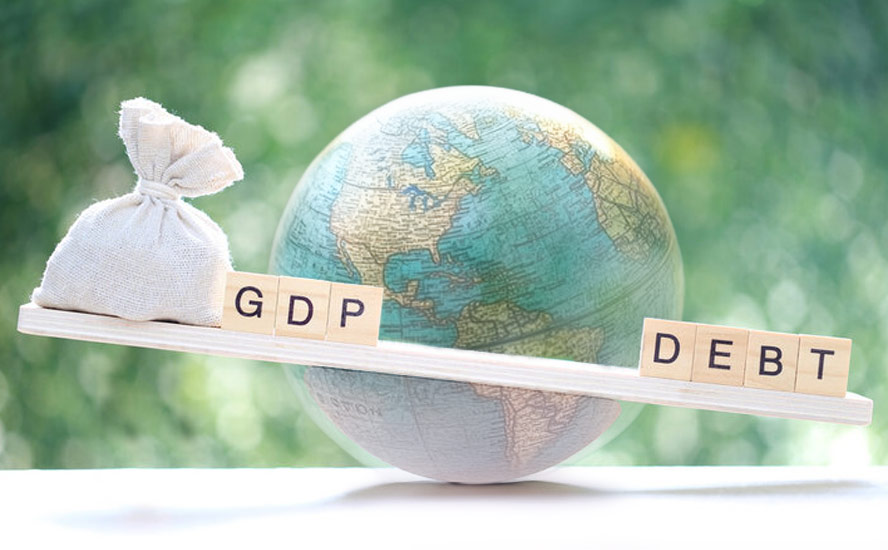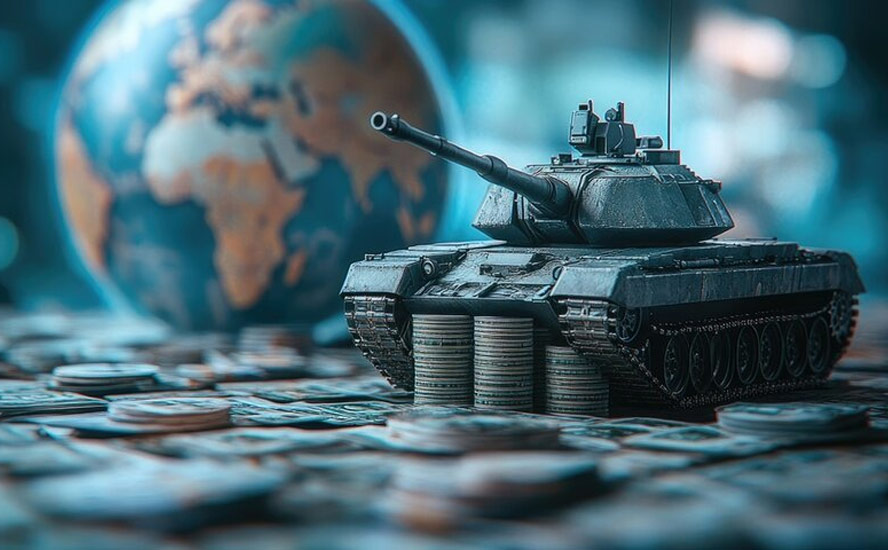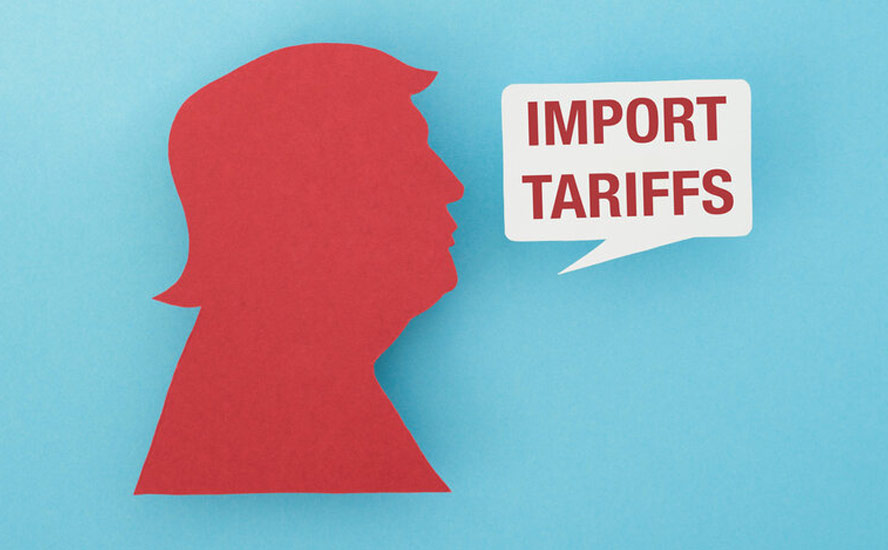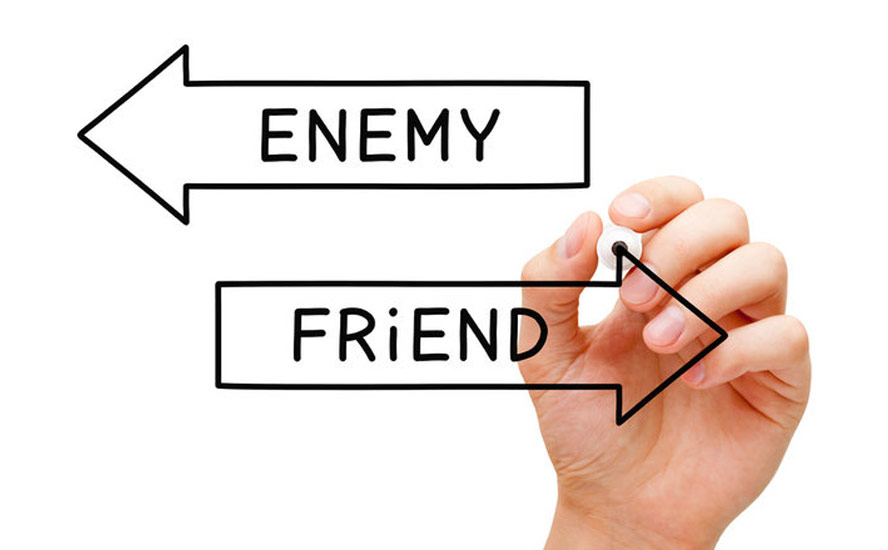Is China preparing for war?

2020.06.30
A flurry of safe-haven demand has pushed gold higher in recent weeks, due in part to China’s shift from a ‘soft power’ foreign policy to an increasingly aggressive, militaristic stance.
We see a number of events happening that are both destabilizing, and move China closer to blows with its adversaries.
On June 15, there was a disagreement over two Chinese tents and observation towers that Indian officials said had been built on its side of a demarcation line in the disputed Galwan Valley.
The seemingly minor scuffle escalated into the first deadly border clash in nearly 40 years. Al Jazeera reports:
A large group of Chinese soldiers arrived and confronted the Indian troops. It was not clear what happened next, but the two sides soon clashed, the Chinese soldiers reportedly using iron rods and batons with spikes, killing 20 Indian soldiers and wounding dozens of others.
India moved its fighter jets to forward bases facing China, and warships were deployed to the Bay of Bengal. China reportedly lined up more jets and bombers to its air-based offensive platforms along the Line of Actual Control in Ladakh.
Things are also heating up between China and Taiwan, which Beijing considers a renegade province that must eventually be united with the Motherland.
Seven Chinese fighters in less than two weeks approached Taiwan’s airspace. The People’s Liberation Army’s the ‘Liaoning’ and ‘Shandong’ have been combat readiness training, as China prepares to deploy the two new aircraft carriers off the coast of Taiwan.
The US Military countered Beijing’s claims in the South China Sea by holding back-to-back naval exercises in April, and flights of B-1 bombers.
China’s President Xi appears to be using the pretext of the coronavirus as a reason for beefing up the country’s defense forces in preparation for armed combat, telling the state-run Xinhua news agency,
“It is necessary to step up preparations for armed combat, to flexibly carry out actual combat military training, and to improve our military’s ability to perform military missions.”
Why is China picking fights now, when its economy has supposedly turned around, and most of the developed world is consumed by the coronavirus?
Under siege
It turns out the timing is no coincidence.
The first reason China is flexing its military muscles, is it sees an opportunity during the pandemic, when the United States is perceived as weak. The US, despite having knowledge of the virus as far back as November, did little to prepare for it, and has done a real hash of containing it. As of this writing there are 2.6 million cases in the US, which represent more than a quarter of the world’s total 10.3 million infections. Over 128,000 patients have died, more than double the second worst-hit country, Brazil.
Several states that reopened their economies are having to re-impose restrictions, after a second wave of covid-19 cases.
The other reason for China’s belligerence, is that projecting power is a way of concealing economic weakness.
For despite evidence of China’s economy bouncing back, by for example demanding more copper, the truth is more complex, and less optimistic.
2020 is the first year in decades that China has not set a growth target for its economy. The coronavirus pandemic that hit in January-February resulted in the quarantine of millions and a weeks-long economic shutdown. In the first quarter China’s gross domestic product shrank by 6.8%, the first contraction Beijing has reported since 1976.
One indication of a sputtering economy: Chinese Premier Li Keqiang, the second-highest ranking official after President Xi Jinping, apparently praised the city of Chengdu for creating 100,000 jobs by setting up tens of thousands of street stalls. He also recommended “mobile vendors” in his annual report to the government, which charts Beijing’s priorities for the year.
Street vendors hawking fast food and knickknacks? Not exactly stable, lucrative employment.
Unofficial analysis suggests as many as 80 million people in China may have lost their jobs during the economic lockdown this past spring.
In May, the government announced a 6.6% increase in the military budget, while cutting in other areas, including public services, foreign affairs, education, and science/ technology.
“The proposed budget suggests Beijing feels insecure and under siege,” CNN quoted Timothy Heath, senior researcher at the RAND Corporation, a Washington think-tank.
“The robust spending increase reflects intense anxiety about deepening tensions with China’s top competitor, the United States, as well as over the fading hopes for peaceful unification with Taiwan,” Heath said.
“Beijing also has ample reason to bolster defense and security spending to manage mounting problems of domestic turmoil in Hong Kong, western provinces, or across the country as unemployment soars and growth slackens due to the effects of the Covid-19 pandemic.”
Remember, the worst thing the Chinese government can envision is a people’s revolt – the memory of a Tiananmen Square-type uprising is never far from the minds in China’s Politburo; keeping its citizens employed and fed is job one.
China’s increasing militarization comes as relations between China and Western countries are souring. World leaders including those from France, Germany, the UK, Australia and Japan are asking hard questions of China, over their belief that President Xi and the Chinese Communist Party did not adequately warn them about human-to-human spread of the virus, and the potential for a global public health and economic catastrophe.
Al Jazeera reported on Monday of ‘a new Cold War’ developing between Washington and the Beijing:
The U.S. and China are moving beyond bellicose trade threats to exchanging regulatory punches that threaten a wide range of industries including technology, energy and air travel.
The two countries have blacklisted each other’s companies, barred flights and expelled journalists. The unfolding skirmish is starting to make companies nervous the trading landscape could shift out from under them…
Pressure is only expected to intensify ahead of the U.S. elections in November, as President Donald Trump and presumptive Democratic nominee Joe Biden joust over who will take a tougher line on China.
Trump has blamed China for covering up the coronavirus pandemic he has mocked as “Kung Flu,” accused Beijing of “illicit espionage to steal our industrial secrets” and threatened the U.S. could pursue a “complete decoupling” from the country.
Meanwhile the Chinese government has warned Australia, its largest trading partner, to distance itself from the United States, and hinted that Australia will feel more pain than the US, due to the former’s lesser ability to retaliate in a trade fight. Last month China targeted Australian exports of barley and beef, after officials criticized Australia for joining calls for an investigation into the coronavirus pandemic, News.com.au said.
World trade and China’s fakery
The Chinese government would have you believe that neither its imports nor its exports took much of a hit from the coronavirus this year. In fact nothing could be further from the truth.
At the beginning of June, customs data from the world’s second largest economy showed a 3.3% drop in exports in May compared to a year ago, while imports plunged 16.7%. The reduction in shipments suggests weak demand abroad, with dozens of countries still hampered by government-imposed lockdowns and/or social distancing measures. You might as well chuck out China’s order book in April – nobody was buying.
The slide in imports suggests domestic demand in China is sluggish.
Getting accurate figures from the Commerce Ministry is always challenging; more often than not, they are made to suit Beijing’s purposes.
Wolf Street caught the Chinese government in a lie when the site examined world trade figures in March and April.
The first thing Wolf Richter notes is that world trade in goods fell 12% in April compared to March – the largest month to month drop in the history of the Merchandise World Trade Monitor, going back to 2000.
Donald Trump has long complained about the US trade deficit with China, saying it is manipulating its currency and stealing US jobs.
We see covid-19 making the situation worse. For the first four months of 2020, US imports from China cratered 24%, year on year. In May China posted a record trade surplus of $62.9 billion.
Wolf Street graphs how exports and imports in both the US and the Eurozone collapsed in May. In the United States May exports dropped 5.7% compared to April and were 35% less year on year, the worst export performance since 2009. Imports in May fell 1.8% and 23.6% year over year, the lowest since 2010.
In the European Community, April exports according to the World Trade Monitor collapsed by 30.5% year on year. Imports were rocked by 26.7%, the lowest since 2000.
Yet according to China’s official data, imports and exports hardly moved, despite exports from the US and the Eurozone, and all of the major countries and regions, plunging in April. How can this be? Wolf Street states,
This contradicts absolutely everything else we know about trade with China, including what major container carriers have said, and how they have slashed capacity to and from China as trade between China and the rest of the world spiraled down. But miraculously, it doesn’t show up in China’s official data:
With imports and exports, however, cheating invariably comes to light: China’s exports show up as imports by other countries, and China’s imports are other countries’ exports. When global trade goes to heck in a straight line – in violation of the dictum printed on every WOLF STREET beer mug – but only China’s imports and exports pretend nothing has happened, then we have to wonder: Who exactly was China trading with? The Martians?
The Chinese can fudge their trade data all they want, the fact remains that global trade – with or without China – is being weakened by multiple disputes, including:
- The ongoing trade war with the United States. Despite a “phase one” deal signed in January, there is little hope for trade negotiations bearing fruit in the current hostile climate. Phase one was predicated on China buying an additional $200 billion worth of US products, but there are few signs Beijing can live up to its part of the bargain.
- On July 15, US Trade Representative Robert Lighthizer will report on whether China is complying with $150 billion in lobster purchases. If not, retaliatory tariffs could be slapped on China’s seafood industry.
- Officials in the Trump administration are reportedly mulling the idea of canceling US debt obligations to China, while China may be willing to sell US debt (ie. US Treasuries) to pressure the US government. According to Marketwatch, China sold $8 billion of US T-bills in March, leaving China’s holdings at just over $1 trillion, compared to a $1.32 trillion high back in November, 2014.
- On July 1, the fanfare of the new Canada-US-Mexico Agreement taking effect, will be muted by US plans to re-impose tariffs on aluminum imports from Canada. A Bloomberg story said 10% tariffs will be slapped on Canadian aluminum if the country does not limit its state-side shipments of the lightweight metal.
- The United States is also weighing tariffs on a list of products coming from the European Union; the Office of the US Trade Representative said the review stems from the dispute between Europe’s Airbus and US rival Boeing.
- The EU is including the United States on a list of nations whose citizens will be banned from entering the block when it reopens its borders, due to concerns over countries still wracked with covid-19.
- India is expected to impose higher tariffs on imports from China, and to impose stringent quality control measures, due to the above-mentioned military standoff.
Blogger and economic forecaster Christophe Barraud summarizes, “Therefore, in the short term, it seems that risks look skewed toward a slower global trade recovery than expected.”
Casus belli
We can’t assume that economic conflicts lead to shooting wars. On the other hand, history is littered with examples, including the beginnings of World War I and World War II.
As Global News reminds us, not only is increased activity in the South China Sea indicative that “Cold War sabres are being rattled,” there is a heightened risk of a miscalculation:
Although most of the world has been paralyzed by the coronavirus, China continues to increase its military incursions into Japanese territorial waters and has been harassing Vietnamese, Malaysian, Indonesian and Vietnamese oil rigs and fishing vessels.
In separate actions, China last month sent warplanes and warships closer to Taiwan than ever before. In August, China plans to stage a mock invasion of Taiwan that it says will include marines, landing craft and helicopters.
The U.S. military has been unusually busy, too. Five American destroyers and cruisers have transited the Taiwan Straits over the past few weeks, B-1 bombers have twice undertaken training runs over the South China Sea this month, and on Thursday, the Pentagon further provoked China by announcing the sale of US$180-million worth of state-of-the-art torpedoes to Taipei.
However, Washington’s biggest message to China by far was the Pacific Fleet Submarine Force’s declaration this week that all its forward-deployed submarines — that is seven or more of them — were at sea at the same time in the western Pacific.
Whenever there are war games that attract the interest of rivals, the chance for miscalculations increases. That risk was underlined [in May] by a Defense Department complaint that USAF aircraft had had nine dangerous mid-air encounters recently with Chinese aircraft and that there had been one dangerous encounter between a Chinese and an American warship.
Conclusion
Away from geopolitical tensions, Chinese companies have been actively acquiring gold producers and gold juniors. In March Zijin Mining completed the takeover of Colombia-focused Continental Gold for CAD$1.3 billion, and on May 8, another large Chinese gold miner, Shandong Gold Mining, agreed to acquire TMAC Resources for around CAD$230 million. Shandong also snapped up Australia’s Cardinal Resources, which operates in Ghana, for AUD$300 million.
The way we see it, gold/ silver have it made, whether economic growth picks up or it continues to muddle along, still pinned down by the coronavirus. In the current deflationary environment, gold is climbing because of all the other drivers that make it such an attractive investment – a high global debt to GDP ratio from the combination of falling economic growth and rising national debts, owing to massive virus-related stimulus; growth of the M2 money supply lighting a fire under gold prices; continued low interest rates until at least 2022; a steady flow of safe-haven demand, due to the numerous above-mentioned hot spots with regard to a more belligerent China; and social/ economic chaos gripping the United States as it enters a presidential election.
As economies other than the United States continue to reopen, we are hopeful that global economic growth rebounds, particularly in light of stimulus packages being rolled out worldwide focused on “green infrastructure” metals like copper, silver, cobalt and lithium.
However we are also mindful that, until the US gets the coronavirus under control, and while the Chinese economy continues to struggle – despite the positive narrative put out by Beijing – GDP growth will be limited, and national debts will have to soar, to pay for trillion-dollar stimulus packages. We know from previous articles that rising debt to GDP ratios are highly correlated to gold prices. We therefore expect gold, and gold juniors whose share prices offer the best leverage against a rising gold price, to do very well going forward.
Richard (Rick) Mills
aheadoftheherd.com
subscribe to my free newsletter
Ahead of the Herd YouTube
Ahead of the Herd Facebook
Ahead of the Herd Twitter
Legal Notice / Disclaimer
Ahead of the Herd newsletter, aheadoftheherd.com, hereafter known as AOTH.
Please read the entire Disclaimer carefully before you use this website or read the newsletter. If you do not agree to all the AOTH/Richard Mills Disclaimer, do not access/read this website/newsletter/article, or any of its pages. By reading/using this AOTH/Richard Mills website/newsletter/article, and whether or not you actually read this Disclaimer, you are deemed to have accepted it.
Any AOTH/Richard Mills document is not, and should not be, construed as an offer to sell or the solicitation of an offer to purchase or subscribe for any investment.
AOTH/Richard Mills has based this document on information obtained from sources he believes to be reliable but which has not been independently verified. AOTH/Richard Mills makes no guarantee, representation or warranty and accepts no responsibility or liability as to its accuracy or completeness. Expressions of opinion are those of AOTH/Richard Mills only and are subject to change without notice. AOTH/Richard Mills assumes no warranty, liability or guarantee for the current relevance, correctness or completeness of any information provided within this Report and will not be held liable for the consequence of reliance upon any opinion or statement contained herein or any omission. Furthermore, AOTH/Richard Mills assumes no liability for any direct or indirect loss or damage or, in particular, for lost profit, which you may incur as a result of the use and existence of the information provided within this AOTH/Richard Mills Report.
AOTH/Richard Mills is not a registered broker/financial advisor and does not hold any licenses. These are solely personal thoughts and opinions about finance and/or investments – no information posted on this site is to be considered investment advice or a recommendation to do anything involving finance or money aside from performing your own due diligence and consulting with your personal registered broker/financial advisor. You agree that by reading AOTH/Richard Mills articles, you are acting at your OWN RISK. In no event should AOTH/Richard Mills liable for any direct or indirect trading losses caused by any information contained in AOTH/Richard Mills articles. Information in AOTH/Richard Mills articles is not an offer to sell or a solicitation of an offer to buy any security. AOTH/Richard Mills is not suggesting the transacting of any financial instruments but does suggest consulting your own registered broker/financial advisor with regards to any such transactions
Legal Notice / Disclaimer
Ahead of the Herd newsletter, aheadoftheherd.com, hereafter known as AOTH.Please read the entire Disclaimer carefully before you use this website or read the newsletter. If you do not agree to all the AOTH/Richard Mills Disclaimer, do not access/read this website/newsletter/article, or any of its pages. By reading/using this AOTH/Richard Mills website/newsletter/article, and whether you actually read this Disclaimer, you are deemed to have accepted it.


























